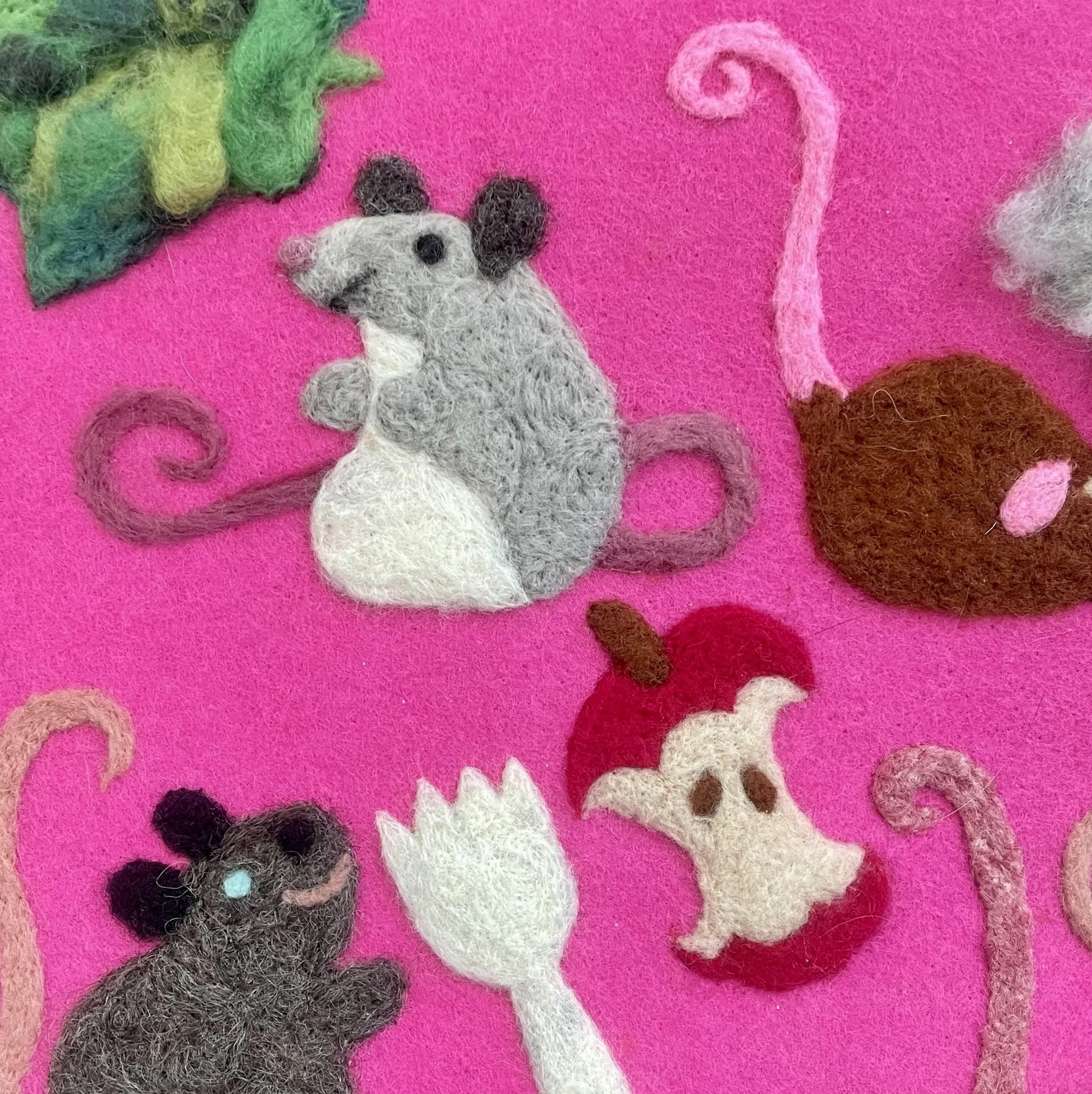 Image 1 of 1
Image 1 of 1


Felted Rats
In 2023, the mayor of New York appointed a “rat czar” devoted to the rodents’ eradication and invested $3.5 million to rat mitigation in Harlem alone. Crowds cheered, journalists made jokes. It seemed like it was one political issue that united rather than divided the city.
Lab experiments through the years have proven that rats feel regret, solve puzzles, demonstrate empathy, sacrifice for each other, and enjoy companionship with their fellow street rodents.
My favorite rat fact: They love playing games but they love tickles more; researchers reward rats with tickles when they play hide-and-seek, and they erupt into gleeful fits of high-pitched rat giggles.
I wonder why we hate them.
Maybe on a subconscious level we know how badly we treat them, and how much like us they really are. Maybe it’s the same confronting “yuck” feeling that I get when I see a street full of makeshift forts. I wonder why the people living there are not treated better, and then why I don’t treat them better.
Rats may be the ultimate “other,” and the questions they potentially raise are uncomfortable ones. If a society can be judged on how it treats the least within it, New York isn’t looking so great.
I’ve started feeling skeptical toward those who hate rats. Do people who hate rats hate something in themselves? Who else do they hate? I think to myself. Are rats somehow so human—too human, in fact—that they can’t stand it? After all, rats scurry and burrow around us, clearly sharing an affinity for our spaces and inventiveness when it comes to what home looks like.
Now, I put on a smile when I see a rat. Not because I think it knows what a smile means (although, who knows!?) but because I’m training myself to erase the invisible line I’ve drawn between worthy creatures and unworthy creatures, beautiful beings and ugly ones, those who delight and those who disgust me.
The first, small step is a smile.
In 2023, the mayor of New York appointed a “rat czar” devoted to the rodents’ eradication and invested $3.5 million to rat mitigation in Harlem alone. Crowds cheered, journalists made jokes. It seemed like it was one political issue that united rather than divided the city.
Lab experiments through the years have proven that rats feel regret, solve puzzles, demonstrate empathy, sacrifice for each other, and enjoy companionship with their fellow street rodents.
My favorite rat fact: They love playing games but they love tickles more; researchers reward rats with tickles when they play hide-and-seek, and they erupt into gleeful fits of high-pitched rat giggles.
I wonder why we hate them.
Maybe on a subconscious level we know how badly we treat them, and how much like us they really are. Maybe it’s the same confronting “yuck” feeling that I get when I see a street full of makeshift forts. I wonder why the people living there are not treated better, and then why I don’t treat them better.
Rats may be the ultimate “other,” and the questions they potentially raise are uncomfortable ones. If a society can be judged on how it treats the least within it, New York isn’t looking so great.
I’ve started feeling skeptical toward those who hate rats. Do people who hate rats hate something in themselves? Who else do they hate? I think to myself. Are rats somehow so human—too human, in fact—that they can’t stand it? After all, rats scurry and burrow around us, clearly sharing an affinity for our spaces and inventiveness when it comes to what home looks like.
Now, I put on a smile when I see a rat. Not because I think it knows what a smile means (although, who knows!?) but because I’m training myself to erase the invisible line I’ve drawn between worthy creatures and unworthy creatures, beautiful beings and ugly ones, those who delight and those who disgust me.
The first, small step is a smile.